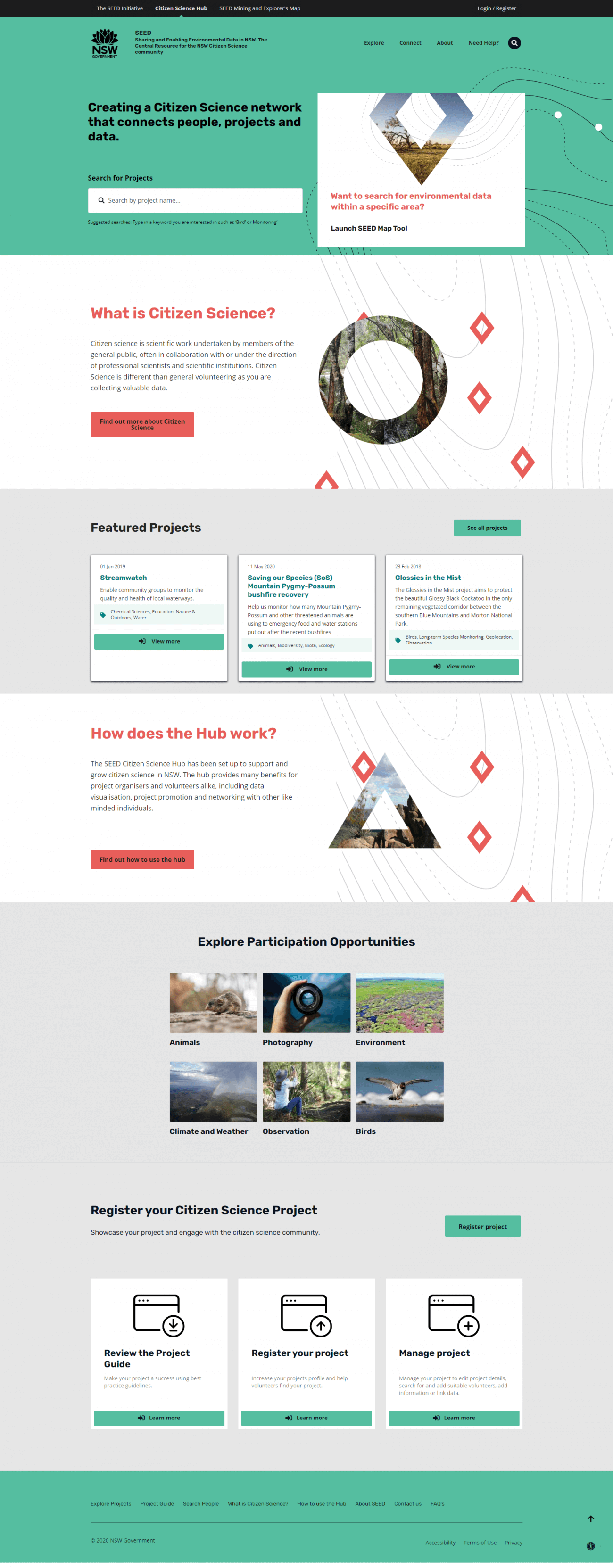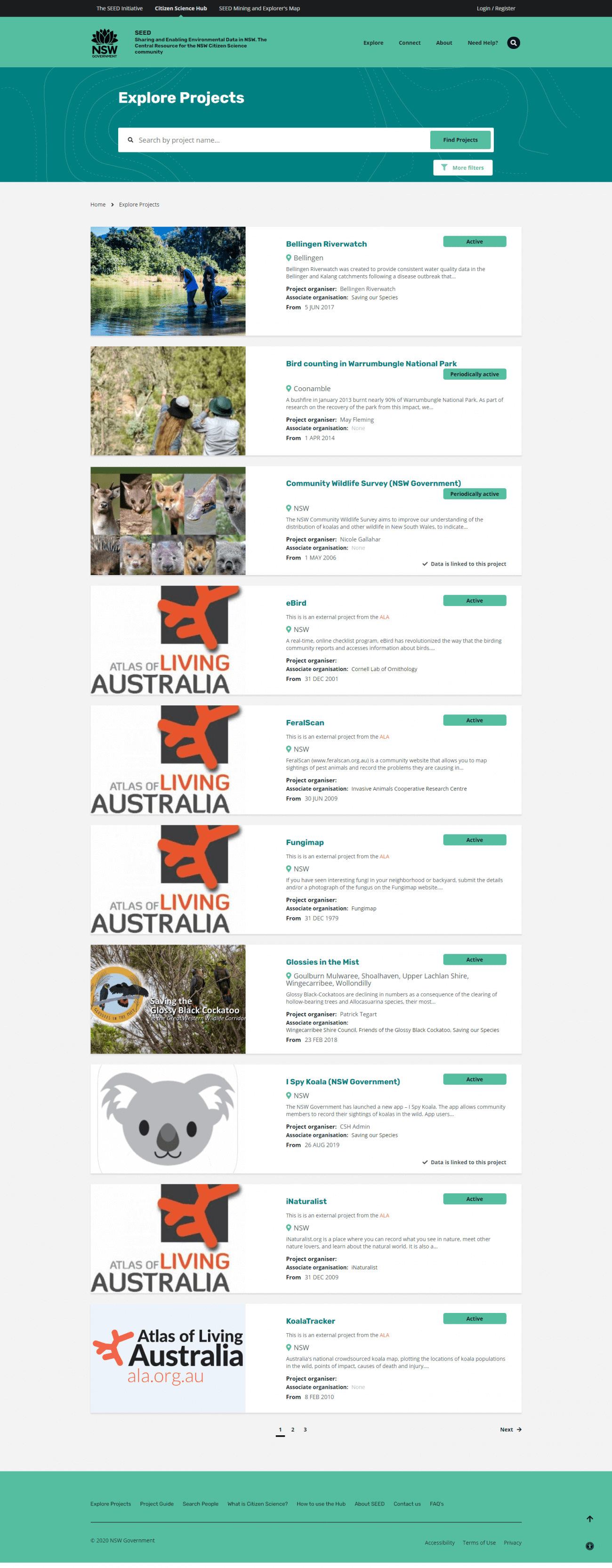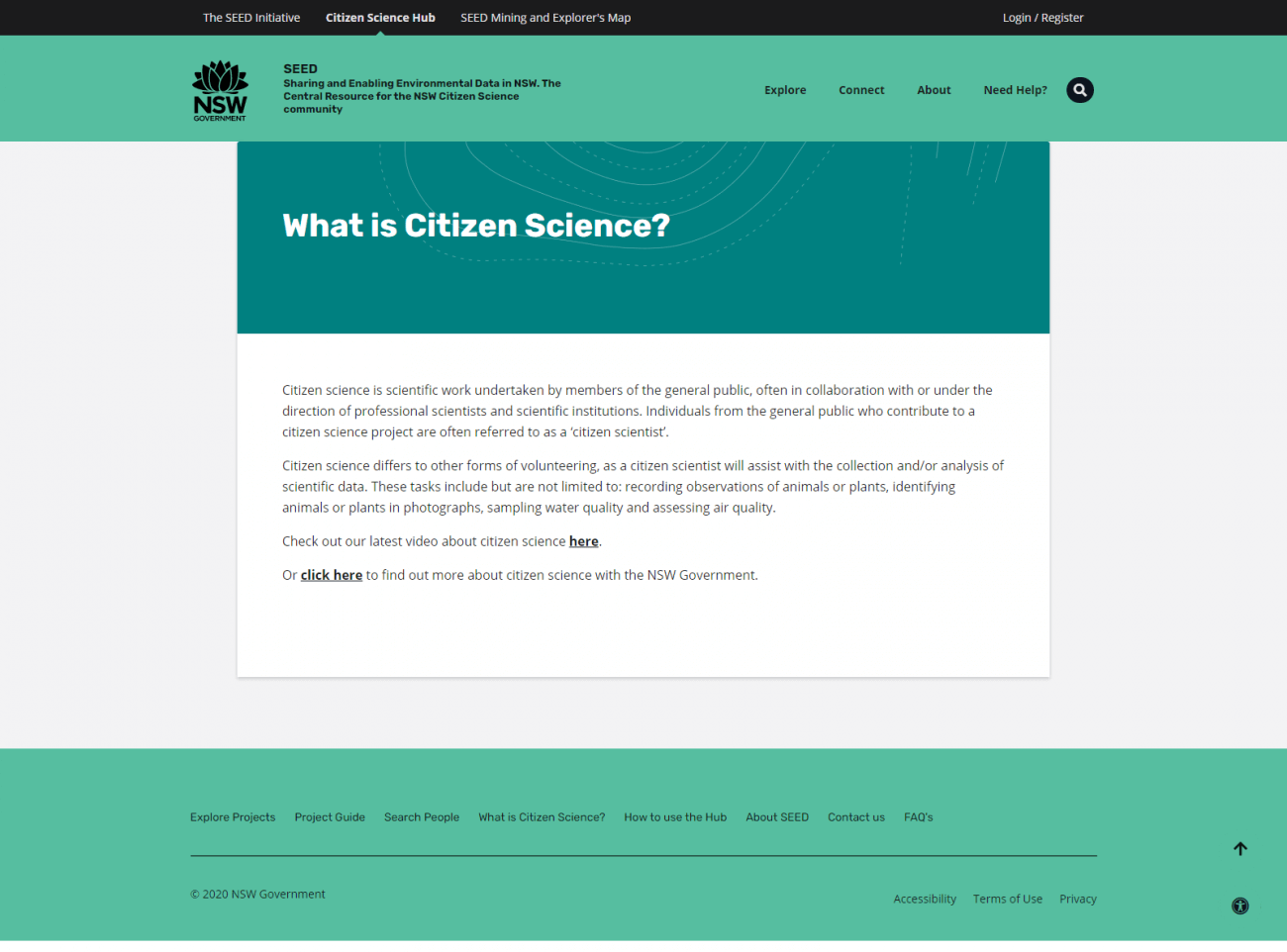Originally published in August 2020.
Link Digital worked closely with the NSW Department of Planning, Industry, and Environment (DPIE) to develop and implement the Citizen Science Hub (CSH) from its initial phase and integrated it with the Atlas of Living Australia and SEED data portals.
Citizen Science Hub (CSH) is a purpose-built hub that places the citizen scientist at the center of how the DPIE engages to connect people and data, and ensures that high-quality data is collected for future use. Built as a one-stop portal for citizen scientists to see their contributions and outcomes no matter the technology they use, it aims to address current challenges, establish and support long term relationships and connect the government with the community.
About the client
Unifying the functions from the former Planning, Environment, and Industry cluster, the NSW Department of Planning, Industry, and Environment brings together specialists in urban and regional planning, natural resources, industry, environment, Aboriginal and social housing, and regional New South Wales. Comprised of six Ministers overseeing different areas of the cluster whilst sharing a common goal – to maximise the long-term wellbeing of New South Wales. Learn more about DPIE here.
Objectives
Today’s advanced technology has revolutionised the way that citizen science volunteers and project organisers capture and store data. The innovation has led to an enormous amount of data being collected, though some of which is inaccessible, fragmented, or disconnected from DPIE and other repositories, and of varied/unknown quality.
As a result, significant duplication of effort within the space, and a general disconnection between effort and contribution occured. Not to mention, that data cannot effectively contribute to decision making (e.g., management actions and conservation planning).
Hence, DPIE reached out to the Link Digital team to develop an interactive, informative and easily sustainable Citizen Science hub within SEED that can:
Challenges
Every project is susceptible to experiencing problems – may it be technical, time constraints, etc. As for the Link Digital team, building CSH from scratch is no exception.
As the first-ever portal of its kind in Australia, it allows the citizen science community to come together and collect environmental data using volunteer citizen scientists’ help. One challenge we overcame was the scarcity of existing projects to take ideas from during the process of building the CSH.
The Link team worked around obstacles whilst integrating the portal with SEED Data Portal to show how the Citizen Science community members help collect the biodiversity data in NSW and then make this data available to everyone afterwards.
With planning, consistent communication with DPIE, and the expertise of our developers, we managed to overcome these challenges and deliver agreed-upon results within the time frame.
Our solution
The Link Digital team used an iterative approach in building and gradually improving CSH’s functionality to get the best possible product. The integration was implemented via seamless linking of projects on CSH to SEED datasets.
Another goal is to connect people, relevant projects, and data. To achieve this, our team paid a lot of attention to building a robust framework that will help project organisers find suitable candidates for their project based on their skills and interests and how they are relevant to a particular project.
The Link team also created a powerful search engine that provides avenues for Citizen Science community members to easily find/follow projects they want to participate in or have piqued their interest.
Learn more about CSH here:
– Visit NSW Department of Planning, Industry and Environment
– Learn more about Citizen Science Hub


